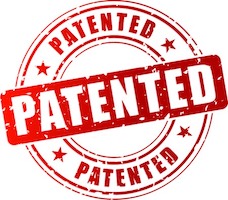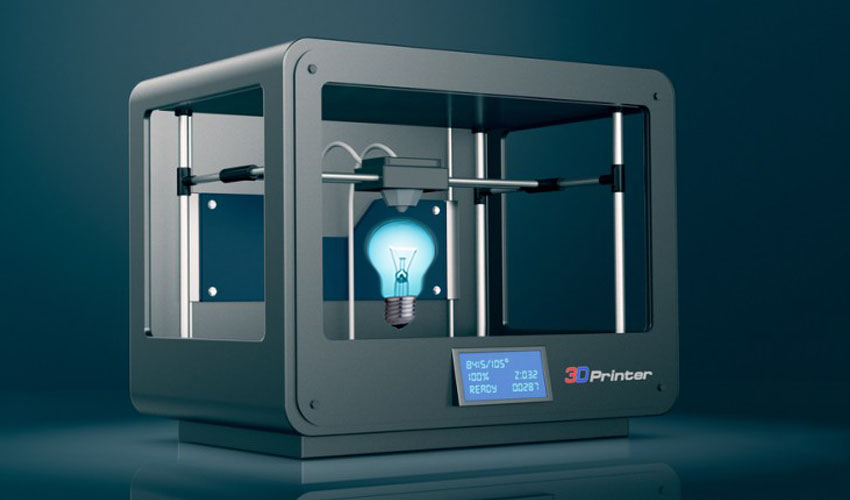In a paper entitled “From IP Goals to 3D Holes: Does Intellectual Property Law Provide a Map or Gap in the Era of 3D Printing?” author Autumn Smith discusses issues with intellectual property law and 3D printing. 3D printing complicated as it “stretches across many facets of the law,” says Smith. It involves a machine, a product, a digital process, and often the translation of that process.
“The eventual low cost of 3D printing combined with their ability to produce most physical things will fundamentally change the economics of industrial manufacturing,” states Smith. “Much like the Internet, 3D printers separate the content of the product from the information used to create it, which, in turn, will substantially reduce the manufacturing costs. This feature will inevitably mean that the production of items can come from virtually anywhere which will certainly present problems for governments and markets.”
3D printing will touch almost every area of law in existence, Smith continues, including gun laws, products liability, importation, contracts, environmental law, regulatory competition law and, of course, intellectual property law. She points to the beginning of music-sharing sites, such as Napster, as a precursor to what is happening with 3D models online. Those sites turned music into a nonrivalrous good, defined as “like an idea: it need only be created once and has an infinite capacity in that once it is created there is no additional marginal cost in allowing others to use it.” Like with Napster, the original producer of the good can be undercut by recreations of the original – but unlike with Napster, a possible benefit is that the 3D printed copies could actually be better than the original.
Smith points out that there is a gap in patent law with 3D printing:
“While protection is available for the product itself under a utility patent, and for the look and feel of the design under a design patent, there is no protection for the underlying function of a digital model of a 3D blueprint in patent law.”
In 3D printing, a user can download a copy of a CAD file and never use it, thus not infringing on the patent. Patent infringement happens only when the item is actually used. Smith points out other ways where aspects of 3D printing tend to fall through the cracks of intellectual property law – but argues that the appropriate response may be to do nothing, that the existing regulatory system works well for many aspects of the technology.
“Ultimately, 3D printing should be gently regulated as it promotes exactly the type of innovation of the arts and sciences that the law aims to bolster,” Smith concludes. “The technology allows for creativity at a cheaper cost than has ever before been possible. However, the largest threat to this development is the current ambiguity of the law. Credence must be given to both the costs and benefits of strengthening the current intellectual property framework and a balance must be reached between rights-holders and other creators. Yet, one thing is clear. A lesson should be learned from the legal chaos that ensued after the widespread infringement that followed from Napster peer-sharing: the law surrounding 3D printing should be clarified now.”
 It’s true that the law is very nebulous when it comes to 3D printing and intellectual property. Smith’s paper is a good read, pointing out that sites like Thingiverse, for example, are great examples of the creative sharing that 3D printing, in particular, has become known for. There have been cases, however, of blatant exploitation of that sharing culture, such as the infamous case in which an eBay seller tried to profit off of a Thingiverse user’s design. In that case, the Thingiverse community rallied around the designer, showing that the 3D printing community, at large, is very anti-piracy yet passionate about sharing.
It’s true that the law is very nebulous when it comes to 3D printing and intellectual property. Smith’s paper is a good read, pointing out that sites like Thingiverse, for example, are great examples of the creative sharing that 3D printing, in particular, has become known for. There have been cases, however, of blatant exploitation of that sharing culture, such as the infamous case in which an eBay seller tried to profit off of a Thingiverse user’s design. In that case, the Thingiverse community rallied around the designer, showing that the 3D printing community, at large, is very anti-piracy yet passionate about sharing.
Smith is correct in that the laws surrounding 3D printing and intellectual property do need to be clarified, to prevent accidental infringements more than anything else. There are many complex issues involved in intellectual property law, and 3D printing is something relatively new that many legal professionals are still trying to figure out how to fit into the existing laws. The technology isn’t going anywhere, however, and neither are the open source values that are so present in the 3D printing community, so the laws will continue to adapt.
Discuss this and other 3D printing topics at 3DPrintBoard.com or share your thoughts below.
Subscribe to Our Email Newsletter
Stay up-to-date on all the latest news from the 3D printing industry and receive information and offers from third party vendors.
You May Also Like
3D Printing Unpeeled: Biofuel Waste to Filament & Sustainable Photopolymers
I can’t ever remember a day with so many potentially high impact news stories have come out. In one story, we all know that there are problems with the safety...
Finnair Hires AM Craft to 3D Print Plastic Parts for Aircraft Interiors
Riga-based AM Craft, a supplier specialized in 3D printing aviation components and certified under EASA Part 21G, announced a significant achievement today. The company will assist in upgrading Finnair’s A320...
3DPOD Episode 198: High Speed Sintering with Neil Hopkinson, VP of AM at Stratasys
Neil Hopkinson, a pioneering 3D printing researcher, played a pivotal role in developing a body of research that is widely utilized today. He also invented High Speed Sintering (HSS), also...
3D Printing Webinar and Event Roundup: May 12, 2024
Webinars and events are picking up in the AM industry this week! ASTM International continues its Professional Certificate Course and Stratasys continues its advanced in-person trainings, while 3D Systems is...


































